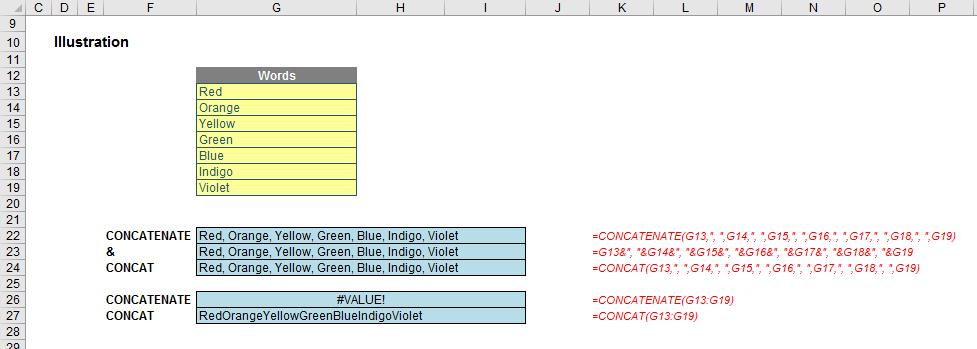A to Z of Excel Functions: The CONCAT Function
18 September 2017
Welcome back to our regular A to Z of Excel Functions blog. Today we look at the CONCAT function.
The CONCAT function
More and more users are migrating to the Office 365 subscription model and with that comes great power, well Excel 2016 anyway. And some versions of Office 365 Excel 2016 are getting six new functions to play with. The roll-out started in late February 2016 and continues to this very day.
Do note I said some Excel users are getting these new features. To have access to these functions, you have to meet one of the following requirements:
- You are an Office 365 subscriber and have the latest version of Office installed on your PC
- You are using Excel Online
- You are using Excel Mobile
- You are using Excel for Android phones and tablets.
Just having standalone Office 2016 is insufficient: Microsoft’s push to get everyone onto the subscription model continues! Even then, the roll-out will be in stages. Office 365, Home, Personal or University subscriptions will update before other types and businesses may find new features have been restricted by their IT departments. Further, recent discussions on Excel for a suggest PCs may be getting new features ahead of those with Mac’s etc.
CONCAT is one of the new functions available in this new-age Excel 2016.
This function replaces the CONCATENATE function (see our next functions blog). The CONCAT function combines the text from multiple ranges and / or text strings:
CONCAT(text1, [text2],…)
where:
- text1 is the text item to be joined
- text2 (onwards) are the additional items to be joined.
For example, consider the following illustration:

Upon first glance, CONCAT does the same thing as the legacy CONCATENATE function or & (ampersand) operator, but is just easier to spell. However, it is a little more than that: CONCATENATE will not cope with highlighting a contiguous range (it will just return the #VALUE! error); CONCAT will concatenate them all.
We’ll continue our A to Z of Excel Functions soon. Keep checking back – there’s a new blog post every other business day.
A full page of the function articles can be found here.

